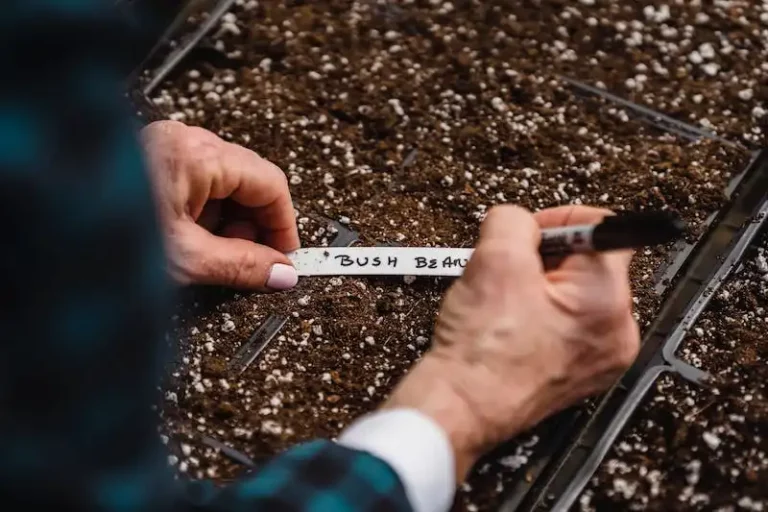If you are looking for a variety of flowers that add pattern and fragrance to your garden, look no further than the Lily of the Valley. These delicate flowers bloom throughout the spring and summer months, making them a beautiful addition to any garden. But before you start planning your Lily of the Valley beds, there are a few things you need to know.
First, let’s talk about the plants themselves. Lily of the Valley flowers are grown from underground stems called pips. When it’s time to plant, you should choose healthy pips that have green shoots or roots. This will ensure the success of your Lily of the Valley flowers and help them establish in the ground.
When planting Lily of the Valley, it’s best to choose a location that receives full or partial sunlight. These flowers prefer cool and shady locations, so keep that in mind when selecting the perfect spot in your garden. Lily of the Valley also needs well-draining soil, so make sure the area doesn’t get waterlogged.
Once you have chosen the right location, it’s time to plant your Lily of the Valley flowers. Dig a hole that is deep enough to cover the pips but not too deep. Sprinkle some water in the hole before planting to moisten the soil. Place the pips in the hole and cover them with soil. Water the newly planted flowers well and watch them grow.
Lily of the Valley flowers are known for their beautiful white blooms and their sweet fragrance. They have a low height, making them the perfect choice for filling in gaps in flower beds or growing in containers. The foliage of Lily of the Valley is also a standout feature, with its distinct green color and slender shape.
To keep your Lily of the Valley flowers healthy, it’s important to take care of them throughout the year. During the winter months, the aboveground parts of the plants die back, but the underground stems remain alive. It’s best to leave them undisturbed during this time. In the spring, you can divide the plants if they have become too crowded.
One thing to note is that Lily of the Valley flowers can be prone to certain diseases. Take care to water them at the base of the plant to avoid getting the foliage wet, as this can contribute to disease. And if you notice any signs of disease, such as yellowing or wilting leaves, take action promptly to prevent further damage.
In summary, Lily of the Valley flowers are a beautiful addition to any garden. They are easy to grow and care for, and their delicate flowers and fragrant aroma will bring joy to your outdoor space. So, if you are considering planting these lovely flowers, be sure to plan ahead and provide them with the right growing conditions. With a little time and effort, you can enjoy the beauty of Lily of the Valley flowers for years to come.
Planting lily of the valley instructions expert tips
Planting lilies of the valley is a relatively simple process. Here are some expert tips to help you successfully grow and care for these delicate flowers:
- Propagation: Lily of the valley can be propagated by division or by seeds. Most growers prefer to divide the plants, as it is the easiest and quickest method.
- Planting time: Lily of the valley should be planted in early spring or fall, while the plant is dormant.
- Location: Choose a location that receives partial to full shade. Lily of the valley prefers moist, rich soil.
- Preparing the soil: Dig a hole that is big enough to accommodate the rootball of the plant. If planting in containers, make sure they have drainage holes.
- Moisture requirements: Lily of the valley requires consistent moisture. Keep the soil evenly moist, but not waterlogged.
- Planting depth: When planting lilies of the valley, make sure the pips (small, white bulblets) are facing up. The plants should be planted about an inch apart.
- Spacing: Space the plants about six inches apart to give them enough room to grow.
- Care after planting: Once planted, water the lilies of the valley thoroughly. After that, the plants should not require much attention.
- Pests and diseases: Lily of the valley is generally resistant to pests and diseases. However, watch out for slugs and snails, as they can damage the foliage.
- Dividing the plants: Lily of the valley can spread quickly, so it’s important to divide the plants every few years to prevent overcrowding.
- Replanting: After dividing the plants, they can be replanted elsewhere in your garden or given to friends.
By following these expert tips, you can successfully grow and enjoy the beautiful blooms of lily of the valley in your garden.
Planting lily of the valley when and how
Lily of the valley is a shade-loving plant known for its delicate bell-shaped flowers and sweet fragrance. If you’re a gardener looking to add this beautiful plant to your collection, there are a few things you should know about planting and caring for it.
Firstly, when it comes to planting lily of the valley, the best time to do so is in the early spring, preferably in March. This is when the plants are most active and will have the best chance of establishing themselves successfully.
Before you plant, make sure to choose a suitable location. Lily of the valley prefers cool, shady areas, so it’s best to find a spot that receives only a few hours of sunlight each day. This could be under a tree or along a north-facing wall.
When it comes to soil, lily of the valley grows best in rich, well-draining soil. If your soil is heavy and clay-like, you might want to consider adding organic matter, such as compost, to improve its drainage.
When planting, you have two options: using pips or rhizomes. Pips are small underground stems that form on the rhizomes, and they are commonly used for propagation. Rhizomes are the thick underground stems that the plants grow from.
To plant using pips, dig a hole that is about 1 inch deep and place the pips in the hole, making sure they are spaced about 6 inches apart. Fill the hole back in with soil and gently firm it around the pips.
If you’re using rhizomes, dig a trench that is about 6 inches deep and place the rhizomes horizontally in the trench, with about 6 inches of space between each one. Cover the rhizomes with soil, gently firming it in place.
Keep in mind that lily of the valley can be a little difficult to transplant once it’s established, so it’s best to choose a permanent spot for it from the beginning.
After planting, it’s important to take care of your lily of the valley. Water it regularly, especially during dry periods, to keep the soil moist but not waterlogged. Be careful not to overwater, as this can lead to root rot.
Although lily of the valley is generally a low-maintenance plant, it can be prone to a few problems. It may develop leaf spot or powdery mildew, especially in humid conditions. If this happens, you can treat it with a fungicide spray.
Another thing to note is that all parts of the lily of the valley plant are poisonous, so it should be kept away from children and pets. If you have small children or curious pets, it’s best to choose a different plant for your garden.
In summary, planting lily of the valley is best done in the early spring, in a cool and shady location with well-draining soil. You can choose to use pips or rhizomes for planting. Take care by watering regularly and addressing any diseases that may arise. Keep in mind the plant’s toxicity and make sure it’s kept away from children and pets. With the right care, your lily of the valley should grow and blossom beautifully in your garden.
When is the best time to plant lily of the valley?
If you are planning to grow and care for lily of the valley flowers, it is important to know when is the best time to plant them. The ideal time for planting lily of the valley is in early spring, usually in March or April. This is when the ground is starting to thaw and before the plants start to actively grow.
Lily of the valley can be planted using two different propagation methods: division and pips. Division is the most common and quick method, where the plants are divided into smaller clumps and planted in the desired location. Pips are small underground stems that can be planted as well.
- If you are using division, make sure to dig up the rhizomes and separate them. Each clump should have a few roots attached and a small piece of the thick, white underground stem.
- For pips, you can plant them directly in the ground or in containers filled with a well-draining substrate.
Regardless of the propagation method you choose, lily of the valley prefers to be planted in a shaded or partially shaded location. They can tolerate full sun, but may need more frequent watering in such conditions.
When planting lily of the valley, make sure to space them at least 6-8 inches apart to allow for proper growth. Dig a hole that is deep enough to accommodate the roots and place the plant in it. Backfill the hole and firmly press the soil around the roots to ensure good contact and eliminate any air pockets.
Lily of the valley can be invasive, so it’s important to keep them in check. They spread by underground stems called rhizomes, which can quickly form dense colonies if not properly divided or controlled. Regular dividing every few years will help prevent this.
After planting, water the lily of the valley thoroughly and keep the soil consistently moist, but not waterlogged. They have shallow roots, so regular watering is important, especially during dry spells.
Lily of the valley is generally a low-maintenance plant and has few problems with diseases or pests. However, they can be prone to rot if the soil is too wet, so make sure to provide adequate drainage.
In terms of varieties, the most common variety is Convallaria majalis, which has white flowers and a sweet fragrance. There are also pink-flowered varieties, such as Convallaria majalis ‘Rosea’ that add a touch of color to the garden.
In conclusion, the best time to plant lily of the valley is in early spring, using either division or pips. Choose a shady location with well-draining soil, and make sure to keep the plants watered and divided regularly to prevent them from becoming invasive. With proper care and attention, these lovely flowers will grow and flourish in your garden.



